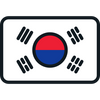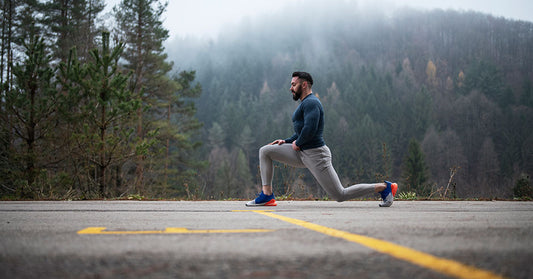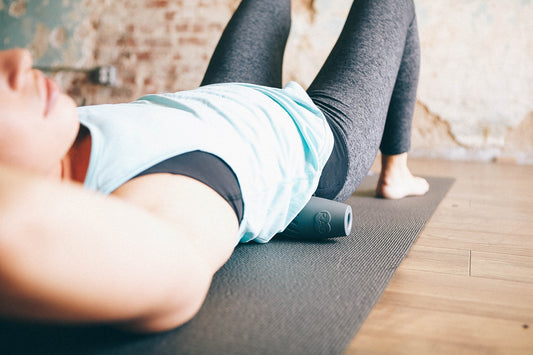If you’re muscles aren’t shaking with effort, you’re not working hard enough
What do you know of barre? If your first answer isn’t “it’s very, very hard,” then YOU KNOW NOTHING OF BARRE. The endless holds and relentless, pulsing movements of barre classes take inspiration from ballet, yoga and Pilates, and all them are seemingly designed to leave your muscles a quivering mess.
Fortunately the benefits of this torture make it worthwhile. Barre can improve your strength, endurance and posture tremendously, and focusing on the legs and core makes barre pretty much the perfect workout for runners.
We enlisted Rod Buchanan, head of barre at Psycle London, to provide barre exercises that all runners should consider working into their cross-training routine. You’ll find all six recommended exercises below, but first, Buchanan has some stern instructions for the first four.
“These four should be performed until you feel a real burn in the muscle and it begins to shake. This action is caused by muscle fibres beginning to break down, which in turn creates lean, strong muscles.”
Gulp.
All 4s

Get on all fours with your knees under your hips and your hands under your shoulders. Keep your core strong. Move one foot towards the ceiling, pulling your heel to your bum to engage your hamstring. Start pulsing that foot towards the ceiling and keep moving back and forth until you start to feel your glutes heat up. Then, keeping your hips still, rotate the same leg from the hip joint, turning it out and in, moving your knee out to the side and back. This will work the outer part of your bum. Don’t stop till you feel the burn and the shake. Repeat with the other leg.
Side lying leg pulse

Lie on one side with your elbow underneath your shoulder and stack your hips with one leg on top of the other. Lift the top leg, keeping it in line with the other leg – don’t lift too high. Hold it there, then start to pulse it up and down. You’ll feel the side of your bum and down the side of your leg start to heat up. Then change that pulse and make little circles with the raised leg, one way then the other. For a quick cardio burst, pull the knee into your chest then stretch the leg back out repeatedly – do it fast but remember to keep your body completely still. Finish with your leg stretched and start pulsing it up again. Repeat on the other side.
Lunge

Step forwards on one leg – your front knee should be over and in line with the ankle, and both knees at 90°. Straighten your torso to make sure the crown of your head is in line with your tailbone and back knee. Start pulsing up and down.
Then pause and move your back knee slightly inwards, then begin pulsing again to work the inner thigh. Pause again and return the back knee to the starting position, then move it out slightly and continue pulsing to work the outer thigh. Finally, to lengthen the muscle and elevate your heart rate, straighten both legs and drop back down into the lunge repeatedly, maintaining the length in your spine. Repeat on the other side.
Wide legs

Open your legs wider than your hips, bend your knees and lower your torso, keeping your head in line with your spine and tailbone – imagine you’re sliding down a glass wall. Your knees should sit over your middle toe. Begin rising again by moving your knees towards your torso, and feel your glutes squeezing together to strengthen the outer quads. Add little pulses up and down, aiming to get your hips in line with your knees without tilting at the waist. Fully straighten the legs and then slide back into position to lengthen the muscles.
Plank

Lie down with your forearms on the floor and tuck your toes under. Brace the front of your body by drawing your bellybutton towards your spine to engage your core, then lift your hips off the floor. The aim is to have your body in one long line, with your head in line with your spine and your shoulder blades lying flat. You should have an elongated spine with a slight tuck at the tailbone to help engage the pelvic floor muscles. Keep your feet together and try to have no gaps between your legs – this will help to keep your glutes and inner thighs active.
To make a plank more advanced and more interesting, there are various moves you can add, like little rocks forwards and backwards, then right and left, or bending and stretching your legs, or making small circles with your hips in both directions.
Side plank

To take a plank straight into a side plank, draw your right hand towards your left elbow keeping your right forearm on the floor, stack your shoulders, hips and feet, and then reach your left hand to the ceiling. Keep your body straight – imagine there’s a piece of string attached to your hip pulling it towards the ceiling. Begin to move your hip up and down in small movements, using different tempos, then take your hip back to its starting position on the floor. Repeat on the other side.
Written by Coach for Coach and legally licensed through the Matcha publisher network. Please direct all licensing questions to legal@getmatcha.com.
Say goodbye to lingering soreness and muscle fatigue... Try New Mobility and Recovery Tools Today!



















